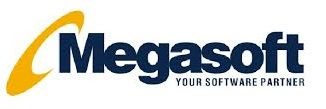
In the ever-evolving landscape of financial services, one area that has seen significant transformation is leasing. Traditionally, leasing processes have been cumbersome and time-consuming, both for financial institutions and their customers. However, with the advent of cloud-based digital asset finance and asset finance software, the leasing landscape is experiencing a renaissance.
In this blog post, we will explore how the cloud is modernizing leasing processes, providing cutting-edge solutions for improved financing.
Cloud-Based Digital Asset Finance: A Game Changer
Before delving into the specifics, let’s establish what cloud-based digital asset finance is and how it differs from traditional methods. In essence, cloud-based digital asset finance leverages cloud computing technology to streamline and enhance the leasing process.
In traditional leasing, paperwork and physical documentation have been the order of the day. This manual approach not only made the process time-consuming but also prone to errors. Cloud-based digital asset finance, on the other hand, brings all aspects of leasing into the digital realm. This includes applications, document submission, approval processes, and customer interactions. By doing so, cloud-based asset finance software offers numerous advantages that dramatically improve the financing experience.
Streamlining Customer and Bank Front-End Application
The first step in the leasing process is the application. In the traditional approach, customers would often need to physically visit a bank or leasing company’s office to start their application. This not only created inconvenience but also limited the accessibility of leasing services to a wider audience. Cloud-based digital asset finance changes this dynamic completely.
With cloud-based digital asset finance software, customers can initiate the leasing process from the comfort of their own homes or offices. This digital transformation has significantly expanded the reach of leasing services, making them accessible to a global audience. The cloud also enables 24/7 availability, allowing customers to apply at their convenience.
Moreover, the application process itself becomes more user-friendly through the cloud. Customers can fill out digital forms, submit necessary documents electronically, and even e-sign agreements. This not only simplifies the process but also speeds it up. The information is securely stored in the cloud, making it easy to access and manage. Banks and financial institutions can quickly review applications, reducing turnaround times.
Cloud Eases Workflow Management and Process Orchestrator
Efficiency is the key to modernizing leasing processes. The cloud plays a pivotal role in this regard by providing efficient workflow management and process orchestration. Unlike traditional methods, where each step of the leasing process could be a potential bottleneck, cloud-based digital asset finance software ensures smooth and continuous progress.
One of the ways the cloud streamlines workflow is by automating various steps in the leasing process. For instance, credit checks, background verifications, and risk assessments can all be automated, reducing the need for manual intervention. This not only speeds up the process but also reduces the likelihood of errors.
Furthermore, cloud-based asset finance software offers advanced process orchestration capabilities. It allows banks and financial institutions to define and manage complex workflows that involve multiple departments or teams. This ensures that every step in the leasing process is executed efficiently, without unnecessary delays. For example, if an application requires approval from multiple departments, the cloud can ensure that each department is notified and can review the application in parallel, rather than sequentially.
Cloud-Based Core Asset Management System
A core equipment leasing software is the heart of any leasing operation. It’s where all crucial data and information about leased assets are stored and managed. In the traditional leasing process, these systems were often fragmented and not easily accessible. Cloud-based solutions revolutionize this aspect as well.
Cloud-based core asset management systems provide a centralized, easily accessible repository for all leased asset information. This includes data about the asset itself, customer agreements, payment schedules, and maintenance records. This accessibility enhances transparency and collaboration, as authorized personnel can access the information they need from anywhere, at any time.
Moreover, cloud-based asset management systems are more robust and secure. They include features like data encryption, regular backups, and disaster recovery, ensuring that critical information is always safe and accessible. This is especially important when dealing with valuable assets.
The cloud also empowers real-time monitoring and analytics. With data stored in a centralized system, financial institutions can gain insights into the performance of their leased assets. They can track payment histories, assess asset utilization, and even predict maintenance needs. This data-driven approach allows for better decision-making and improved risk management.
Improved Customer Experience and Engagement
Modernizing leasing processes through the cloud doesn’t just benefit banks and financial institutions. It significantly enhances the customer experience. Here’s how:
Convenience: As mentioned earlier, cloud-based leasing allows customers to apply and manage their leases online, at their convenience. This eliminates the need for physical visits and long waiting times.
Transparency: Customers can easily access their lease agreements, payment schedules, and asset information through a customer portal. This transparency builds trust and confidence.
Communication: Cloud-based systems enable real-time communication with customers. Automated notifications, reminders, and customer support interactions can all be conducted seamlessly through digital channels.
Self-Service: Customers can make payments, request maintenance, or even initiate the lease-end process through the online portal, reducing their reliance on customer support for routine tasks.
Personalization: The cloud enables institutions to collect and analyze customer data, which can be used to personalize offers and services, enhancing customer engagement.
Security and Compliance
One of the major concerns with digital transformations in finance is security and compliance. Fortunately, cloud-based asset finance software addresses these concerns with robust security measures and compliance features. Data encryption, secure access controls, and audit trails are standard features in cloud-based solutions, ensuring that sensitive customer information is protected.
Furthermore, cloud providers often have industry-specific compliance certifications, which makes it easier for financial institutions to adhere to regulatory requirements. This not only reduces the risk of compliance violations but also streamlines auditing processes.
In conclusion, modernizing leasing processes through cloud-based digital asset finance and asset finance software is a game-changer for the financial industry. It streamlines customer and bank front-end applications, eases workflow management, provides a secure core asset management system, improves the customer experience, and addresses security and compliance concerns. This transformation is not only making leasing more efficient but also expanding its accessibility to a wider audience, ultimately enhancing the financial landscape for everyone involved. The cloud is the future of leasing, and it’s a future that promises more efficiency, transparency, and customer satisfaction.

Leave a Reply